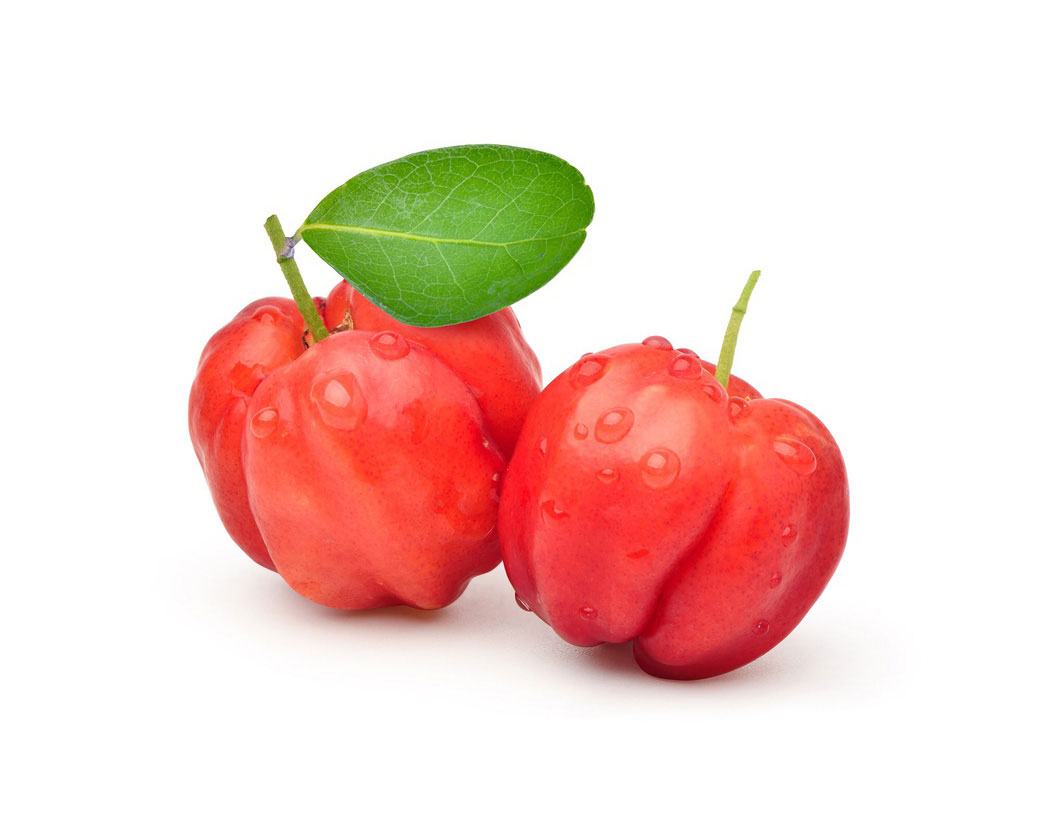Products Scan Our science '%20fill='black'/%3e%3c/svg%3e)
Skincare 
Bath & Body 
Make up 
Trending 
Skincare
Moisturizers
Treatments
Cleansers
Eye Care
Bath & Body
Make up

Malpighia Punicifolia, commonly known as Acerola or Barbados cherry, is a tropical fruit native to the West Indies and Central America, that has a rich history dating back centuries.
Acerola fruits are known for their sweet and tangy flavor, making them enjoyable to eat on their own or used in various culinary preparations. They are often consumed fresh, added to fruit salads, made into juices, jams, or used as a flavoring ingredient in desserts and beverages. In addition to being delicious, Acerola fruits are highly nutritious and rich in vitamin C, antioxidants, and other beneficial compounds.
The fruit extract is derived from the small, vibrant red berries of the Malpighia Punicifolia plant, has been used in traditional medicine to boost immunity, soothe skin irritations and insect bites, aid digestion, and alleviate stomach discomfort.
Acerola fruits are incredibly rich in ascorbic acid, also known as vitamin C, with an exceptional concentration ranging from 1500 to 4500 mg per 100 grams. This content is approximately 50 to 100 times higher than that found in oranges or lemons.
The acerola fruit extract is also very rich in B vitamins, beta-carotene, and flavonoids, which all have antioxidant properties.
In recent decades, Brazil has emerged as the leading producer of acerola, commercially harnessing its potential. The country has not only excelled in cultivation but has also dominated the marketing and export of various processed acerola products. These include frozen fruit, juice, marmalade, frozen concentrate, jam, and liquor.
In the United States, the supplement and pharmaceutical industries utilize acerola as a valuable source of ascorbic acid due to its high content in the fruit.
One of the key functions of Malpighia Punicifolia Fruit Extract in skincare is its exceptional antioxidant properties. Antioxidants help protect the skin from damage caused by free radicals, which are unstable molecules that can accelerate the aging process and contribute to various skin concerns. By neutralizing these free radicals, Acerola Fruit Extract helps maintain the skin's healthy appearance.
The high content of vitamin C is also beneficial as an important factor in collagen production in the skin. It protects the skin from oxidative damage and boosts the activity of other antioxidant enzymes.
Research suggests that the natural abundance of vitamin C and other antioxidants in Acerola Fruit Extract may contribute to its skin-brightening effects when consumed orally. However, its effectiveness for skin brightening when applied topically is still being studied and requires further research.
Vitamin C found in acerola extract also serves as a valuable antioxidant in skincare formulations. Antioxidants play a crucial role in protecting the formula from air- and light-induced oxidation, offering several advantages for the overall stability and efficacy of the product.
When skincare products are exposed to air and light, the active ingredients within them can undergo oxidation, leading to a decline in their potency and overall effectiveness. This oxidation process can be accelerated by factors such as environmental pollution, UV radiation, and even the packaging of the product itself. However, the presence of vitamin C in acerola extract can help combat this issue and extend the shelf life of the skincare formula.
Malpighia Punicifolia (Acerola) Fruit Extract is generally considered safe for topical use in skincare products.